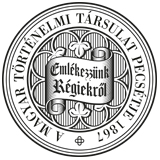Századok – 2012
KÖZLEMÉNYEK AZ 1711. ÉVI SZATMÁRI BÉKE TÖRTÉNETÉRŐL - Kis Domokos Dániel: Drámai hangulat és reális értékelés: „Magyarok Törökországban" és „Egy bujdosó kuruc". Rákóczi-kultusz a színpadon IV/961
RÁKÓCZI-KULTUSZ A SZÍNPADON 979 — csak 1711-ben született.6 9 Ez a darab gyakorlatilag megbukott, s erről ekkor sem a díszlettervező Oláh Gusztáv vagy a kiváló jelmeztervező Márk Tivadar tehetett. A zenei részekből utóbb a Hegedű-preludium, a Minuetto serio, a Nincs boldogabb a parasztembernél, a Rákóczi nóta és a Notturno már többször fölcsendült az utóbbi öt-tíz évben a hazai hangversenytermekben és a Magyar Rádióban. Végül megjegyezhető, hogy Kodály a darab zenéjének keletkezésekor mondotta többek között a korszak híres hangszeréről, amelyet azután a nemzeti romantika varázsolt újjá: „A tárogató egészen más volt, mint a Schunda-féle, amelynek csokoládé-színű hangját a magyar közönség örökre azonosította a kuruc korral."70 DRAMATIC ATMOSPHERE AND REALISTIC APPROACH: „HUNGARIANS IN TURKEY" AND „A WANDERING REBEL". THE CULT OF RÁKÓCZI ON THE STAGE by Kis Domokos Dániel (Summary) Alongside various poetic and musical works, the evolution of the cult of Rákóczi, and its modifications through the ages, are also reflected by a relatively small number of dramatical works. One of them is the Captivity of Ferenc Rákóczi II, which was written by Ede Szigligeti in 1848 and put to stage in the same year. The drama itself ends with the beginning of the Rákóczi revolt, whereupon follows the well-known melody of the Rákóczi march. The name of Rákóczi was under almost complete prohibition in both literature and other arts throughout the 18th century and a good part of the 19th. It could only be mentioned by the historians, evidently mostly in a negative tone, as that of someone who rebelled against his legitimate ruler. We only know of one early play: Mihály Vitkovics was held to have written a drama about Ferenc Rákóczi II, but either he destroyed it or it got lost otherwise. As a matter of fact, Vitkovics was one among the first to write about the Turkish letters of Kelemen Mikes. It was finally in 1848 that Rákóczi could openly appear on the stage, primarily as an idol of liberty, then, especially later, as the symbol of political exile. The Captivity of Ferenc Rákóczi II, which was put to stage with the participation of the most illustrious members in the National Theatre of Pest on 4 November 1848, won deserved success. Naturally this play, as all real works of art, spoke to its contemporaries, and shaped history according to the problems of its own age. It was only after the years of oppression, in 1861, that the play could get back on the agenda again. Interestingly, according to the censorial example of the National Theatre of Pest, which is currently preserved in the theatre history collection of the Hungarian National Library, the permission of censor József Worafka was issued on 16 March 1862, and the drama was indeed played again on 23 March. The popular play of Imre Vahot, eventually called „Hungarians in Turkey", was originally entitled as „Wandering (bujdosó) Hungarians in Turkey", but was put under ban as such by the censure before the compromise of 1867. Nevertheless, it was put to stage in 1858, but only once. 69 Czinka Panna, (sajógömöri) — mert nyilván „volt több is" — 1711 és 1772 között élt. - Ellenben a neki tulajdonított Czinka Panna-nóta már a 19. században keletkezett. ,0 Kodály Zoltán első nyilatkozata. Kodály a színpadon i.m. 108-110. - Az oboa és a klarinét összeszerkesztésével hozta létre — némi, inkább naiv, szerencsétlen próbálkozás után — a napjainkig híres új magyar hangszert Schunda Vencel József hangszergyáros a 19. század vége felé, illetve Stowasser János hangszerkészítő. Ezen már — ellentétben az eredeti tárogatóval vagy töröksíppal — valóban a kor ízlésének megfelelő kellemes hangzással szólalhattak meg a bonyolultabb dallamok is, akár a Rákóczi-induló vagy a Kraszna-horka büszke vára, és szól ma is. A témáról újabban legrészletesebben: Kovács Altos: Musica Pannonica. Nemzeti hangszerünk: a tárogató. 2000 [folyóirat] (2005: 6. sz.) 21-47.
